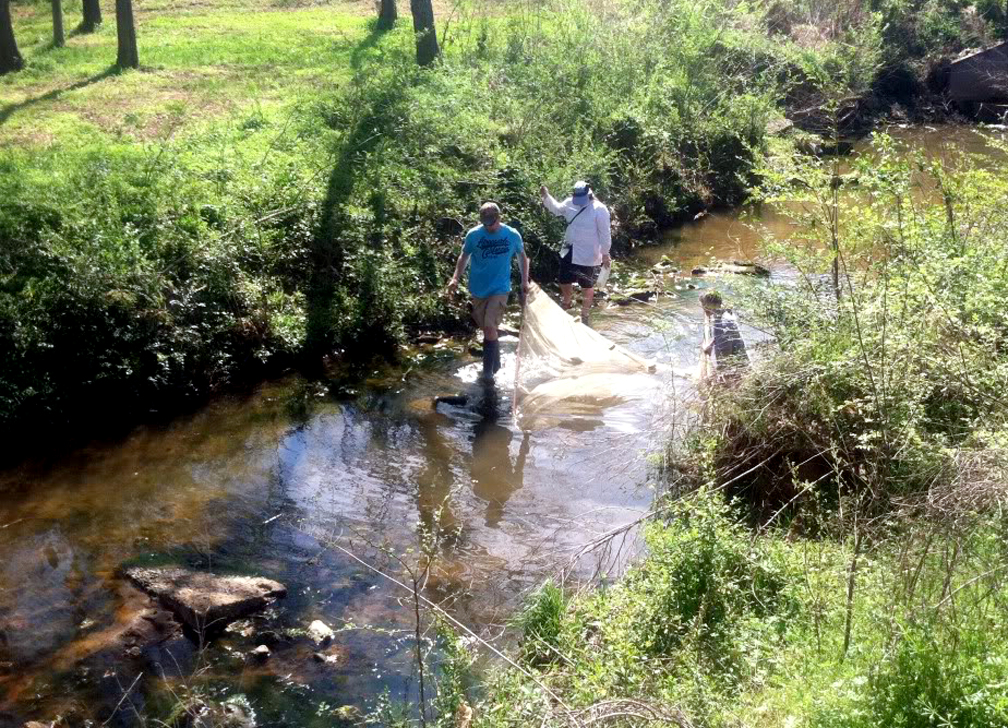Athens, Ga. – A team of University of Georgia students, faculty and staff in collaboration with Athens-Clarke County Storm Water and the Upper Oconee Watershed Network is working to make local streams cleaner.
The group, led by Laurie Fowler of the Odum School of Ecology; Mark Risse of the College of Agricultural and Environmental Sciences; Jon Calabria of the College of Environment and Design; and project coordinator Tyra Byers of the Office of Sustainability, received a one-year, 319 nonpoint source implementation grant from the Environmental Protection Agency for a research and planning project that addresses pollution in three Athens streams: Tanyard Creek, Lily Branch and drainage beginning at the UGA Physical Plant.
To involve the community in the cleanup effort, a public workshop will be held on April 30 from 6-7:30 p.m. in the Odum School of Ecology auditorium. The evening will include short presentations about the watersheds and the watershed planning effort, tables with information and input opportunities.
Tanyard Creek and Lily Brank begin in Athens-Clarke County and pass through campus before draining into the North Oconee River, a source of drinking water for Athens residents. Previous research conducted by UGA faculty and students has shown all three streams contain high levels of fecal coliform, with high levels of hydrocarbon pollution found in Lily Branch.
Although some sources of contamination have been identified, the project’s goal is to identify other potential sources and create a plan to address water quality improvements in the streams. “That includes fixing things that are broken, such as sewer pipes, and implementing best management practices to reduce other sources,” Fowler said. “Rain gardens and bioswales can control storm water volume and capture pollutants, for example, and a successful dog waste pick-up program can ensure that pet waste doesn’t end up in our streams.”
Both the Oconee River and the Tanyard Branch are on the EPA’s 303d list for fecal contamination, Byers said, which means they’re not meeting federal requirements for clean water for their designated uses. Though people who live near UGA receive drinking water upstream of the project area, the polluted streams affect water quality for other communities.
“These streams are a part of our watershed health,” she said. “People take drinking water out of the river downstream from us. People fish, swim and boat in these waters.”
The project team includes faculty and staff members from—at UGA—the Office of Sustainability, Physical Plant Grounds Department, Odum School of Ecology, College of Environment and Design, Warnell School of Forestry and Natural Resources, College of Agricultural and Environmental Sciences and University Architects and—from the community—Friends of Five Points and Emerging Green Professionals.
UGA graduate students completing the university’s environmental practicum will conduct research along with representatives from Athens organizations including the River Basin Center, Athens Clarke County Storm Water, the Upper Oconee Watershed Network and Friends of Five Points.
Blake Conant, who is a second-year master’s student working on a degree in landscape architecture and an intern in the Office of Sustainability, is creating GIS maps of the streams and their sample points. Working on the project has been a perfect way to incorporate what he’s learned in the classroom into real-world situations, Conant said.
“We deal a lot with storm water infrastructure and stream restoration in landscape architecture,” he said. “This project just fit my interests.”
The ultimate goal of the project is to create an ongoing collaboration between UGA and Athens-Clarke County, according to Byers, and to educate the campus and surrounding community on what they can do to prevent future stream contamination. The project will include outreach activities in schools, local businesses and organizations.
“It’s a good town-and-gown community partnership because the watersheds run through both of our backyards, so it’s a perfect way for UGA and the Athens community to work together,” Byers said. “It’s also a great way for students to engage in a project that’s hands-on and will actually impact their quality of life while they’re on campus.”
For more information on the watershed grant or other initiatives of the UGA Office of Sustainability, see http://www.sustainability.uga.edu/.
